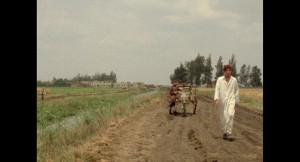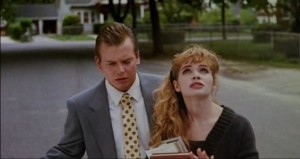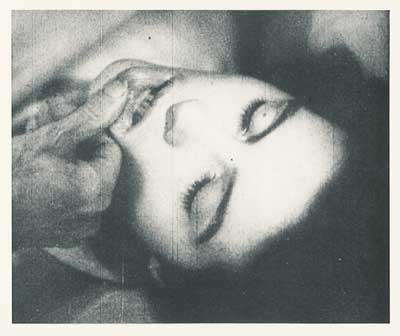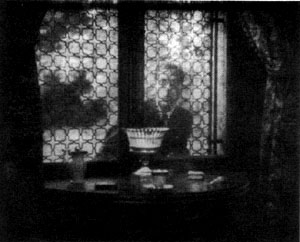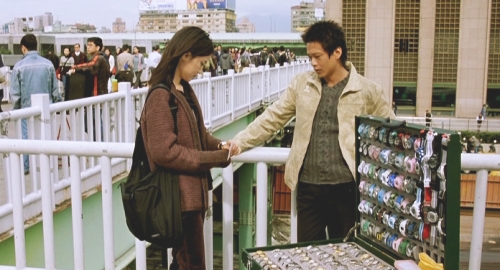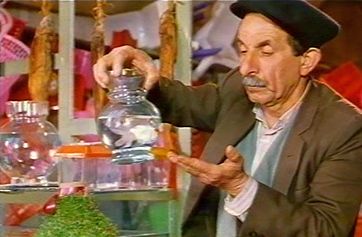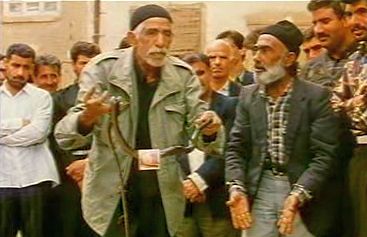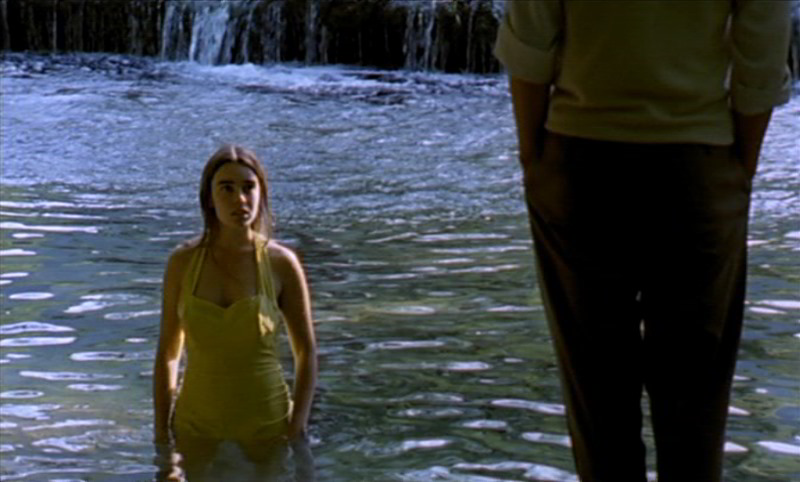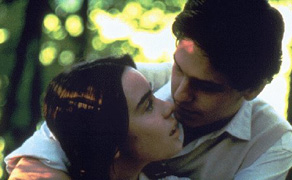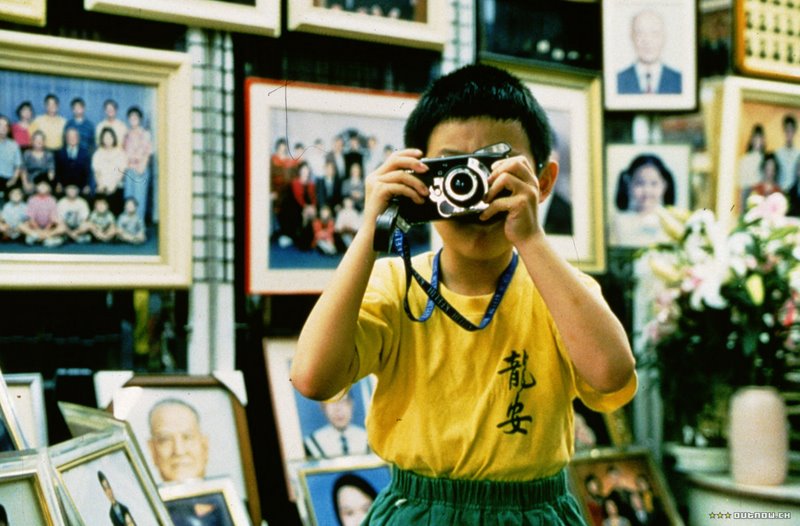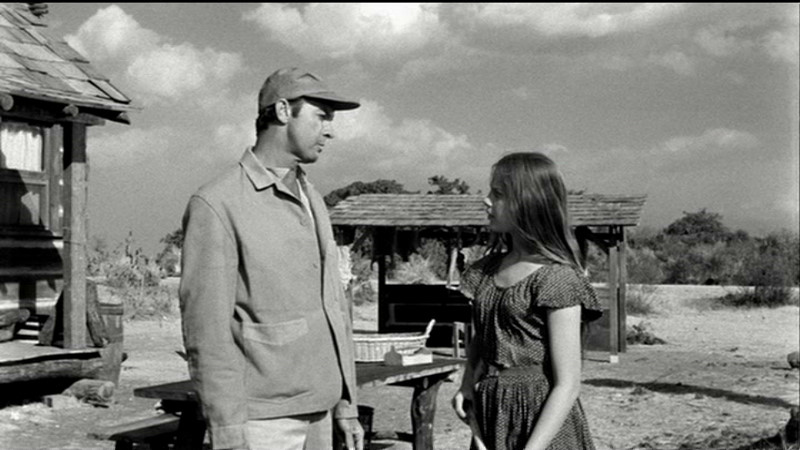These are expanded Chicago Reader capsules written for a 2003 collection edited by Steven Jay Schneider. I contributed 72 of these in all; here are the sixth dozen, in alphabetical order. — J.R.
Too Early, Too Late
This 1981 color documentary by Jean-Marie Straub and Danièle Huillet, one of their few works in 16-millimeter, is almost certainly my favorite landscape film. There are no “characters” in this 105-minute feature about places, yet paradoxically it’s the most densely populated work in their oeuvre to date. The first part shows a series of locations in contemporary France, accompanied by Huillet reading part of a letter Friedrich Engels wrote to Karl Kautsky describing the impoverished state of French peasants, and excerpts from the “Notebooks of Grievances” compiled in 1789 by the village mayors of those same locales in response to plans for further taxation. The especially fine second section, roughly twice as long, does the same thing with a more recent Marxist text by Mahmoud Hussein about Egyptian peasants’ resistance to English occupation prior to the “petit-bourgeois” revolution of Neguib in 1952. Both sections suggest that the peasants revolted too soon and succeeded too late. One of the film’s formal inspirations is Beethoven’s late quartets, and its slow rhythm is central to the experience it yields; what’s remarkable about Straub and Huillet’s beautiful long takes is how their rigorous attention to both sound and image seems to open up an entire universe, whether in front of a large urban factory or out on a country road. As in Jacques Tati’s studio-made Playtime, their subject is the sheer richness of the world we live in.
Trust
Hal Hartley’s second feature (1990) — a decided improvement over his first, — returns to the same basic turf, a Long Island commuter town, and features the same lead actress (Adrienne Shelly) as an alienated teenager. This time around, Shelly plays a high school student who finds herself pregnant, provokes her father’s fatal heart attack, gets unceremoniously dumped by her boyfriend and kicked out of the house by her mother (Merritt Nelson), is assaulted, witnesses a kidnapping, and meets an angry and disgruntled electronics whiz (Martin Donovan), all in the same day.
It’s a credit to the film that this overflow of incident neither strains credibility nor becomes exploited for facile comedy. In fact, the movie’s real story only begins once the heroine and the electronics whiz become involved and their mutual adjustments — including the strains represented by their difficult parents –gradually transform both of them. Unpredictable while remaining honest to both its characters and its milieu, this flaky comedy-drama improves as it proceeds, much as Hartley’s own corpus of work has often done; with John MacKay and Edie Falco.
The Unbelievable Truth
A highly intriguing if not always fully successful first feature (1990) by independent writer-director Hal Hartley, shot in his hometown on Long Island, gives us, among other characters, a mechanic mistaken for a priest (Robert Burke) returning from a prison sentence, a politically alienated teenager (Adrienne Shelly) who later finds work as a model for lingerie ads, and the teenager’s mercenary redneck father (Christopher Cooke). (Burke, Shelly, and Cooke would go on to work with Hartley again in subsequent features —- Burke in Simple Men and Flirt, Shelly in Trust, and Cooke in Trust and Simple Men.)
Fantasies about global annihilation obsess the teenager, fantasies about money obsess her father, and fantasies about a pair of murders apparently committed by the mechanic obsess almost everyone else. The unvarnished quality of some of the acting limits this effort in spots, but the quirky originality of the story, characters, and filmmaking and the offbeat, deadpan humor keep one alert and curious. With Julia McNeal, Mark Bailey, and Gary Sauer.
Underground
Though slightly trimmed by director-writer Emir Kusturica for American consumption, this riotous 167-minute satirical and farcical allegory about the former Yugoslavia from World War II to the postcommunist present is still marvelously excessive. The outrageous plot involves a couple of anti-Nazi arms dealers and gold traffickers who gain a reputation as communist heroes. One of them (Miki Manojlovic) installs a group of refugees in his grandfather’s cellar, and on the pretext that the war is still raging upstairs he gets them to manufacture arms and other black-market items until the 60s, meanwhile seducing the actress (Mirjana Jokovic) that his best friend (Lazar Ristovski) hoped to marry. Loosely based on a play by cowriter Dusan Kovacevic, this sarcastic, carnivalesque epic won the 1995 paume d’or at Cannes and has been at the center of a furious controversy ever since for what’s been called its pro-Serbian stance. (Kusturica himself is a Bosnian Muslim.) However one chooses to take its jaundiced view of history, it’s probably the best film to date by the talented Kusturica (Time of the Gypsies, Arizona Dream), a triumph of mise en scène mated to a comic vision that keeps topping its own hyperbole.
Vampyr
The greatness of Carl Dreyer’s first sound film (1932, 83 min.) derives partly from its handling of the vampire theme in terms of sexuality and eroticism and partly from its highly distinctive, dreamy look, but it also has something to do with Dreyer’s radical recasting of narrative form. Synopsizing the film not only betrays but misrepresents it: while never less than mesmerizing, it confounds conventions for establishing point of view and continuity, inventing a narrative language all its own. Some of the moods and images conveyed by this language are truly uncanny: the long voyage of a coffin, from the apparent viewpoint of the corpse inside; a dance of ghostly shadows inside a barn; a female vampire’s expression of carnal desire for her fragile sister; an evil doctor’s mysterious death by suffocation in a flour mill; a protracted dream sequence that manages to dovetail eerily into the narrative proper.
Financed and produced by a Dutch cinephile, Baron Nicolas de Gunzburg — who was cast in the leading role of David Gray under the pseudonym of Julian West —- the film was freely adapted from a short story by Sheridan Le Fanu, “Carmilla,” that appeared in his collection Through a Glass Darkly (not a novel, as stated erroneously in the credits). Like most of Dreyer’s other sound features, it flopped commercially when it came out, then went on to become something of a horror and fantasy (as well as art movie) staple even though it has never fitted snugly or unambiguously in any of these generic categories.
The remarkable sound track, created entirely in a studio (in contrast to the images, which were all filmed on location), is an essential part of the film’s voluptuous and haunting otherworldliness. (Vampyr was originally released by Dreyer in four separate versions — French, English, German, and Danish; most circulating prints now contain portions of two or three of these versions, although the dialogue is pretty sparse.) If you’ve never seen a Carl Dreyer film and wonder why many critics, myself included, regard him as possibly the greatest of all filmmakers, this chilling horror fantasy is the perfect place to begin to understand.
The Wedding Banquet
A young Taiwanese businessman living in New York and sharing an apartment with his physical therapist boyfriend decides to marry a Chinese artist who needs a green card. The next thing he knows, his parents from Taiwan, not knowing he’s gay, have decided to come to the wedding, leading to a good many predictable if enjoyable comic complications. Director Ang Lee collaborated on the script with Neil Feng and producer James Schamus — the latter of whom has continued to work with the director ever since as both producer and cowriter. This 1993 feature, Ang Lee’s second, is a very adroit and entertaining social comedy that helped to establish him as a commercial director long before such more obvious mainstream crowd pleasers as The Ice Storm and Crouching Tiger, Hidden Dragon. Satire about — yet also clearly for — the middle class, it has a lot more heart than edge, and is pitched mainly at liberal straight people, though the Chinese cultural details should be fascinating to all non-Chinese viewers. With Winston Chao, Mitchell Lichtenstein, Sihung Lung, May Chin, and Ah-leh Gua.
What Time Is It There?
This 2001 feature is in may ways Tsai Ming-liang’s most exciting and original to date. The obsessive constants in his first five features — the same actors playing similar roles in some of the same locations, the quirky preoccupation with water and alienation — may make him seem like a minimalist. But here he branches out beautifully by adding another city and country to his repertory — Paris, France, which alternates with Taipei — without compromising any of his formal rigor or playfulness. In The Hole a young man and woman occupy flats on separate floors of the same building; here they occupy separate countries and time zones. They remain basically strangers, apart from fleeting encounters, but the intricate formal rhyme schemes devised by Tsai as he oscillates between the two are even more inventive than those in The Hole — one of the many things evoking Jacques Tati. There’s also some play between the young man watching Truffaut’s The 400 Blows on video in Taipei and the young woman encountering its star, Jean-Pierre Léaud, in a Paris graveyard.
I was irritated, though not surprised, that in one segment of crosscutting between masturbation, lesbian sex, and straight sex, only the latter is denied any dignity. The young man’s father has recently died, his mother is crazed and delusional with grief, and the film goes places in its treatment of death and time you’d never expect. Though lack of human connection remains a constant in Tsai’s work —- and persists even more strikingly in this film’s 23-minute sequel, The Skywalk is Gone (2002), featuring the same characters in the same Taipei intersection without any encounters between them — the various kinds of formal connectedness that he reveals here, not only across cities but between different parts of the planet, feel somehow hopeful as well as despairing, and there’s even something resembling a happy ending. With Lee Kang-sheng and Chen Shiang-chyi.
The White Balloon
The most popular non-American movie that was shown at the 1995 Cannes film festival, this fresh and unpredictable comic “thriller” from Iran is the first feature of Jafar Panahi, a former assistant to the great Abbas Kiarostami (Through the Olive Trees), who’s credited, along with Panahi and Parviz Shahbazi, with the screenplay. The film describes in real time the adventures of a seven-year-old girl and her older brother in the streets of Tehran during the 85 minutes that elapse immediately before the celebration of the Iranian New Year.
After convincing her mother she needs another goldfish for the celebration, the little girl sets off to buy one, but twice en route to the store she loses the banknote she’s been given. Most of the remainder of the film is devoted to her efforts to get the money back. If the plot sounds slender, the movie is both gripping and charming, with well-sketched characters and expert storytelling — and Panahi’s efforts to redefine our sense of time along the way are remarkable. Bit by bit, we’re drawn into this child’s perception of time passing, focused on her monomaniacal desire for the goldfish and the various obstacles standing in the way of her acquiring it.
No less important is the film’s abrupt, last-minute revelation of middle-class snobbery on the part of the girl after a soldier goes to a lot of trouble to help her out in recovering her money. This points one towards the more obvious ethical concerns of Panahi’s next two features: the issue of Iranian filmmakers exploiting children in The Mirror — which also features a little girl alone in the city, but this time self-referentially, so that it’s about the actress as well as the character she’s playing —- and The Circle, a much more formally and politically radical work of protest against the abusive treatment of women in Iran.
Wild Reeds
Though I liked his criticism for Cahiers du Cinéma in the 60s, I wasn’t a big fan of the five early Andre Téchiné films I saw. But this wonderful and masterful feature (1994), his 12th, suggests that maybe he was just tooling up. It’s one of the best movies from an excellent French television series of fiction features on teenagers of the 60s, 70s, and early 80s. If Téchiné’s French Provincial (1974) evoked in some ways the Bertolucci of The Conformist, this account of kids living in southwest France in 1962, toward the end of the Algerian war, has some of the feeling, lyricism, and sweetness of Bertolucci’s Before the Revolution –though it’s clearly the work of someone much older and wiser.
The main characters, all completing their baccalaureate exam at a boarding school, include a boy struggling with his homosexual desire for a close friend, an older student who’s a right-wing opponent of Algerian nationalism, and a communist daughter of one of the teachers, who befriends the homosexual and falls for the older student in spite of their political differences. One comes to regard these characters and others as old friends, and Téchiné’s handling of pastoral settings is as exquisite as his feeling for period. Winner of Cesar awards (the French equivalent of Oscars) for best picture, director, screenplay, and “new female discovery” (Elodie Bouchez).
Yi Yi
Edward Yang’s most accessible movie and probably his best since A Brighter Summer Day, this 2000 feature follows three generations of a contemporary Taipei family from a wedding to a funeral, and while it takes almost three hours to unfold, not a moment seems gratuitous. Working again with nonprofessional actors, Yang coaxes a standout performance from Wu Nien-jen (a substantial writer and director in his own right) as N.J., a middle-aged partner in a failing computer company who hopes to team up with a Japanese game designer and who has a secret rendezvous in Tokyo with a girl he jilted 30 years earlier; other major characters include the hero’s eight-year-old son, teenage daughter, spiritually traumatized wife, comatose mother-in-law, and debt-ridden brother-in-law. The son — a comic and unsentimental marvel named Yang-yang — becomes obsessed with photographing what people can’t see, like the backs of their heads, because to him it’s the half of reality that’s missed. He may come closest to being a mouthpiece for Yang, who seems to miss nothing as he interweaves shifting viewpoints and poignant emotional refrains, creating one of the richest families in modern movies.
The Young One
Luis Buñuel’s two English-language films, this picture and the 1952 The Adventures of Robinson Crusoe, are among the most neglected of his middle-period Mexican films — made between his early Surrealist masterpieces (Un chien andalou, L’age d’or, Land Without Bread) and the late European features (Viridiana, That Obscure Object of Desire) that revived his world reputation. The Young One is a taut comedy-thriller from 1961, set on a game-preserve island off the Carolina coast, though shot, surprisingly, in Mexico. A northern black jazz musician (Bernie Hamilton), fleeing a trumped-up rape charge involving a white woman, arrives on the island and is briefly befriended by a young teenage orphan (Key Meersman), the granddaughter of a handyman who’s just died. An unfriendly game warden (Zachary Scott) who’s taken a shine to the girl tries to kill the musician; eventually a local preacher (Claudio Brook) and the game warden’s boatman (Crahan Denton) also turn up. A satiric look at both racism and sexual hypocrisy that refuses to take sides, this dark, sensual comedy of manners, adapted quite freely from a Peter Matthiessen story by the gifted blacklisted screenwriter Hugo Butler (under a pseudonym) along with Buñuel, is full of poetic asides and unexpected developments, revealing Buñuel’s dark, philosophical wit at its most personal.
Zabriskie Point
Though Michelangelo Antonioni’s only American film was poorly received when it was released in 1969, time has in some ways been kinder to it than to La notte, made a decade earlier. Antonioni’s boldly nonrealistic and poetic approach to American counterculture myths and his loose and deliberately slow approach to narrative may still put some people off — along with the uneven dialogue (credited to Fred Gardner, Sam Shepard, Tonino Guerra, Clare Peploe, and the director). Antonioni also cast two young unknowns as his romantic leads —- a carpenter (Mark Frechette) and a college student (Daria Halprin), neither of whom has been seen since —- along with a relatively wooden professional, Rod Taylor. He was at the height of his commercial prestige at the time, having just made his only international hit in England (Blowup), and expectations that he would bring off something similar in relation to countercultural America were undoubtedly overblown.
But his beautiful handling of widescreen compositions, Pop Art colors and subject matter (largely derived from Southern California billboards), and wistful moods have many lingering aftereffects, and the grand and beautiful apocalyptic finale is downright spectacular. Some of Antonioni’s other pictures —- most notably, Red Desert, Eclipse, and The Passenger —- end or almost end with passages of stylistic bravura that drastically recast as well as summarize everything in the pictures preceding them, and in this case, Antonioni doesn’t disappoint.

